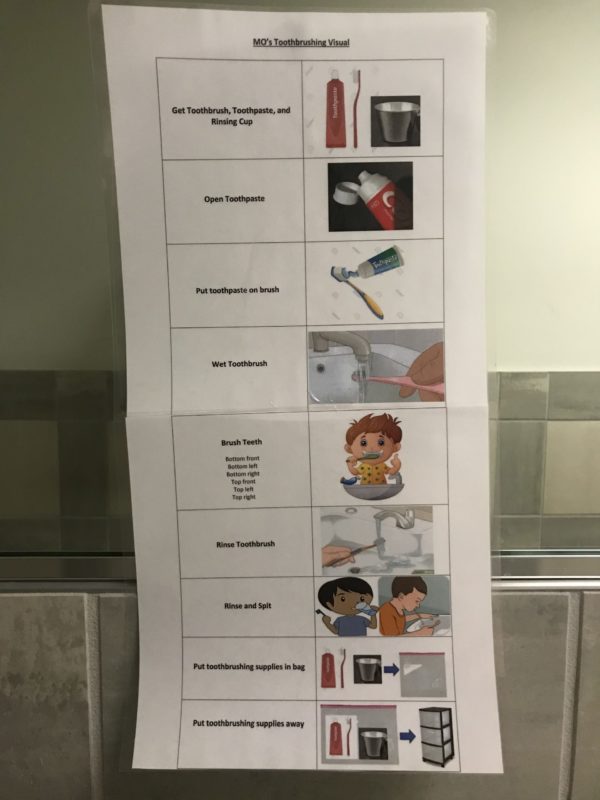
Have you ever felt overwhelmed learning something that requires multiple steps? Maybe it’s taken you multiple tries to learn how to change a flat tire. Or maybe you still need to follow all the steps to make your grandma’s Thanksgiving gravy recipe, while she knows it by heart. In short, it’s hard to master multi-step processes all at once.
For a child with autism, even daily tasks we deem as second-nature may take a lot of work to learn. Not to mention, it can be hard for you as the parent to teach your child these everyday functions. Perhaps you want to teach your child more independence. This is why breaking down complex tasks into steps can be incredibly helpful. In ABA therapy, we call this “chaining.”
The process of chaining provides a smooth path for learning multi-step tasks. But chaining isn’t just meant for ABA therapy. Parents like you, as well as teachers or any other caregivers, find chaining effective in helping kids acquire daily skills.
What is chaining?
Chaining is the active process of stringing together a series of skills in time. When we consider how to teach a skill, the first step is to look at how it can be broken down into smaller components. This is called a task analysis. The components are then linked or “chained” together in a particular order. Research proves chaining is highly efficient for children learning multi-step tasks.
Breaking down tasks, can make learning more rewarding and easy for children with autism. For example, when brushing your teeth, you need to put toothpaste on the toothbrush. But a child with autism might need specific details on how to do that step, such as “Take cap off of toothpaste and squeeze on toothbrush.”
For example, here is a step-by-step task analysis for brushing teeth to be linked through chaining:
- Take cap off toothpaste.
- Squeeze toothpaste onto toothbrush.
- Turn on water and get toothbrush wet.
- Brush top teeth.
- Brush bottom teeth.
- Spit into sink.
- Sip water and rinse mouth.
- Spit water into sink.
- Put away toothbrush and toothpaste.
Types of chaining in ABA therapy
Forward
Forward chaining in ABA therapy teaches behavior in chronological order. Each step is reinforced one at a time until that step is mastered.
For example, when teaching a child to dress themselves, start with the step, “Put on underwear,” or whichever piece of clothing goes on first. Praise the child for their effort, even if it takes them a while or it’s a struggle. Then assist them with all the following steps and identify each of them (“Now we’re going to put on pants/shirt/shoes”). Once they have mastered putting on underwear independently, focus on high praise for the next step until mastered and so on until the child can perform each step without assistance.
Backward
Backward chaining is the opposite of forward chaining. Instead of reinforcing the child for the first step completed independently, a caregiver reinforces the very last step.
In the same example of a child getting dressed, the caregiver helps the child put on underwear, pants, shirt, and socks. The final step is putting on shoes. When the child can get their shoes on independently, give them lots of praise just as in forward chaining. Once shoes are mastered, work on socks, and so on backwards through the task analysis. Teaching in a backwards order ensures you always end the task on a positive.
Visuals for Task Analysis and Chaining
Visual aids are helpful for chaining and following task analysis. They’re a reference for kids to use as they work on mastering skills. If you went into the bathroom in our clinics, you’d see laminated task analysis visuals for brushing teeth and washing hands posted on the mirrors in the bathroom that look like this:

You can create your own colorful, fun visuals such as this one to motivate your child!
In conclusion, chaining in ABA therapy helps both children and caregivers by establishing the child’s independence in daily tasks. Chaining can be used in a child’s ABA program, but also at home, school, or any other place they might spend time. Be sure to reach out to your child’s BCBA if you need help creating a visual or need modeling on how to incorporate chaining into your child’s daily routines.
Click here for more information on our ABA therapy programs.

